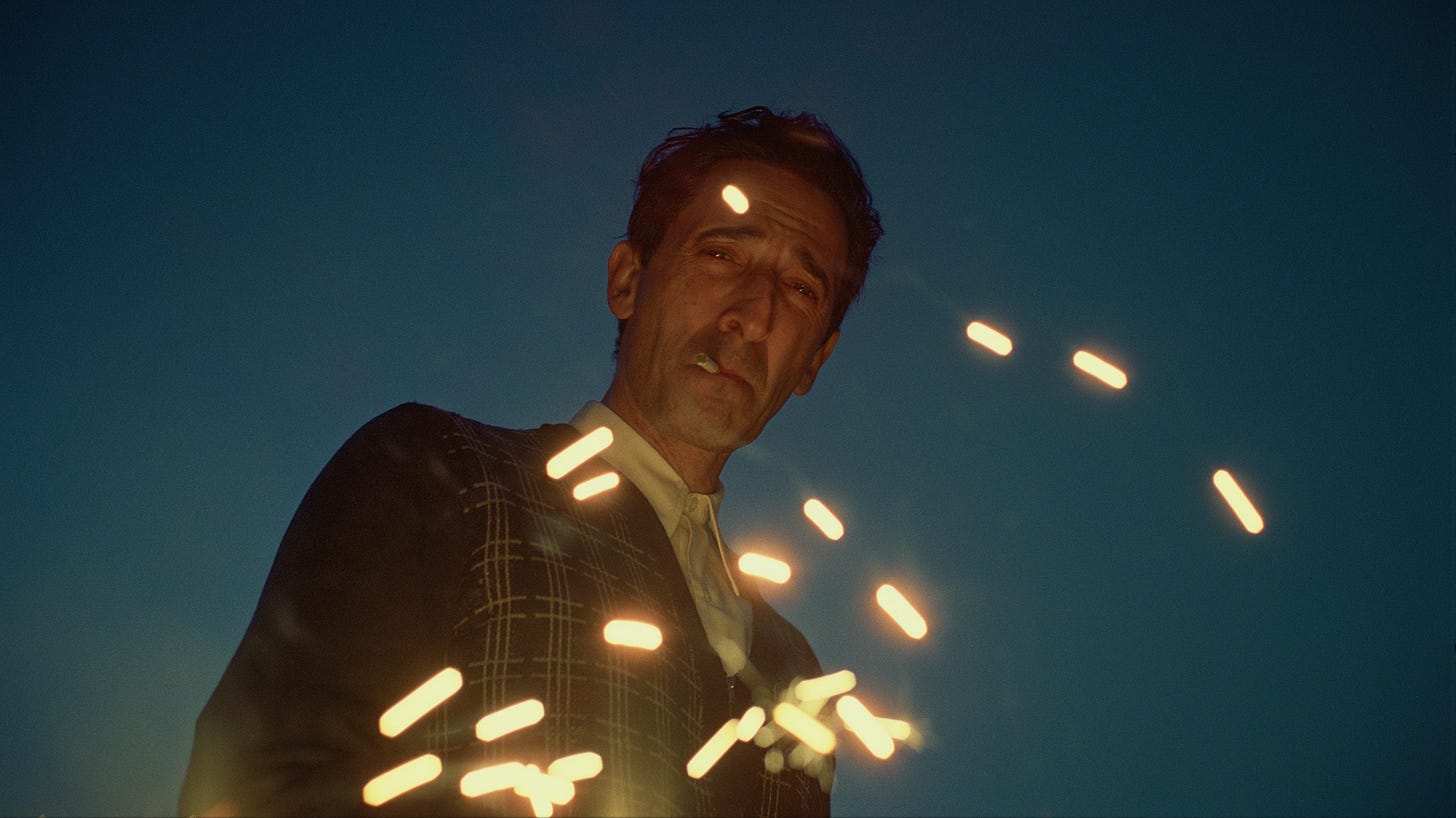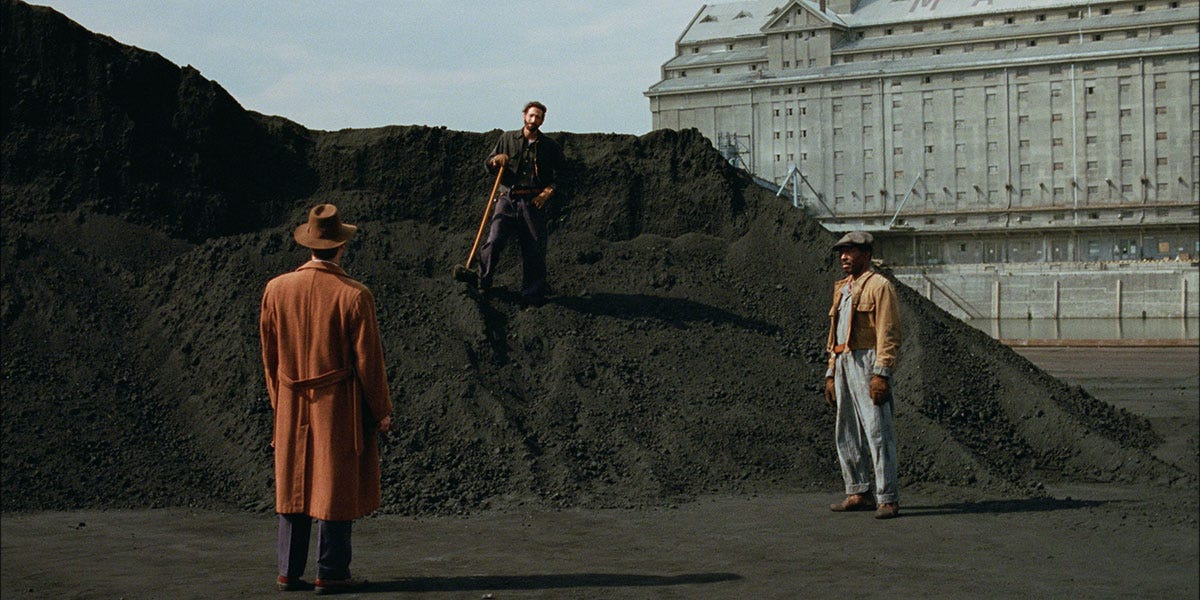StubStack: The Brutalist
The Brutalist is a big, bold, and beautiful film about the consequences of war, American assimilation, and the tension between art and commerce.
Adrien Brody as László Tóth in The Brutalist
The Brutalist follows László Tóth, a Hungarian Jew fleeing World War II and the Nazis in search of a better life in America. He lands in Pennsylvania, where he begins working for a cousin who’s established himself and his furniture business in Philadelphia.
László is an architect and artist whose works were either destroyed or forgotten in the wake of the war. That is until he crosses paths with Harrison Lee Van Buren, a wealthy man who comes to admire and appreciate László's talents.
Harrison and László strike up both an intellectual and professional relationship, which leads to Harrison hiring László to design and build a massive community center in honor of his late mother.
Meanwhile, László’s family—his wife and niece—are still trapped in Europe, adding a layer of tension and urgency to his story.
I found The Brutalist's take on the immigrant experience in America to be insightful, though not entirely unique. The idea that assimilation is a two-way street—that established Americans should actively encourage and support the process—while perhaps obvious, is a perspective I hadn’t fully considered before. László is determined to build a life and a career for himself in America, but the Americans he encounters are quick to patronize and remind him of his place. An immigrant cannot truly assimilate if Americans don’t make space for or accept them into the fold.
Another major theme in The Brutalist, aside from the immigrant experience, is the tension between art and commerce. László is committed to doing things the 'right' way, with the artistic ideal as his guiding principle. Reality, however, has budget constraints. One of the film’s central conflicts revolves around how to complete the building—while Harrison and many of his advisors push to cut artistic corners to save money, László is determined to see his vision through.
One interpretation of the film is that the construction of the community center serves as a metaphor for filmmaking—its creation is marked by arduous effort, the sacrifices required to make it great, the intoxicating and corrupting nature of control over the process, and the misaligned goals of the financiers or movie studios and the filmmakers themselves.
Guy Pearce, Adrien Brody, and Isaach de Bankolé in 'The Brutalist.'
The Brutalist is brimming with thematic depth, elevated by expert performances, filmmaking, and craftsmanship. Adrien Brody as Tóth and Guy Pearce as Van Buren deliver outstanding performances, fully deserving of the Oscar buzz surrounding them. The cinematography, set design, and costumes work in harmony to create stunning visuals, with many locations—particularly the marble quarries in Italy—being truly mesmerizing.
I’d be remiss not to mention the music, which is remarkable and arguably one of the best soundtracks of the year. It captures the era perfectly—brassy, at times jazz-like—and though a variety of songs are used, they all share a similar tone, sound, and theme. This powerful, evocative score runs throughout The Brutalist, enhancing its emotional depth.
Director and co-writer Brady Corbet took a big swing with The Brutalist. This film was clearly a monumental undertaking, crafted with the ambition to make a lasting mark on cinema history and its canon. At 3.5 hours long, with a 15-minute intermission (which I greatly appreciated), it never feels overlong or drawn out.
The Brutalist is one of the best films I've seen in the past year—definitely worth seeing on the biggest screen possible.





